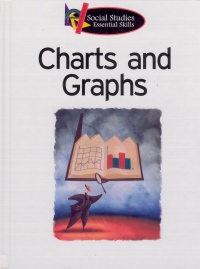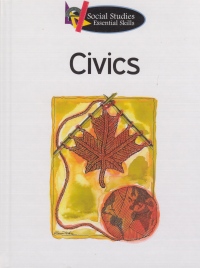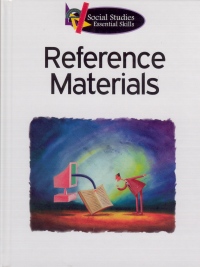| ________________
CM . . .
. Volume XV Number 10. . . .January 9, 2009
excerpt:
The "Social Studies Essential Skills" series touches on key elements of the social studies curriculum over many grades, skills that spill over into math and language arts. With some reservations, the books in this series can prove useful to students working on projects in social studies and other subject areas. They bear a 2009 copyright date and contain listings of websites for students to consult for further information. Reference Materials reminds students to confirm the accuracy of Internet resources, especially, since they may be authored by anyone, no matter their qualifications. It also advises students on how to do effective searching on the Internet. This is a valuable tool for students since the Internet is a treasure-trove of information but consumes inordinate amounts of time when surfed inefficiently. The setup of all four books is identical, making them accessible for young people. However, the bolded words explained in the glossary seem randomly chosen. For example, in Civics, the word 'values' is bolded and explained in the glossary. Since the book is all about what society values, that word should be explained in the text. The word 'legislature' is bolded on p. 13, in an explanation about Elijah Harper's decision to oppose the Meech Lake Accord in 1990. But, if it is important to explain that word, then why not explain that the Meech Lake Accord was an initiative of the federal government, and what constituency that represents. Attention to the purpose of the article and the editing process could eliminate the glossaries in many of these books. On p. 12 of Civics, it states: "Governments collect taxes. They provide sanitation services, such as garbage disposal. Governments also maintain a military that protects the country in times of war." 'Taxes' is later defined as "money that workers contribute to the government to help pay for roads, schools, and other services." Taxes are not contributed. They are demanded, required, enforced by law; hence the word 'tax.' They are paid by all citizens, not just 'workers.' And wouldn't a young reader be better served by having that explanation within the text, since the text is about how and why government works? On p. 10 of Mapping, under Learning about Landforms and Bodies of Water, one reads, "There are many types of landforms, such as mountains, canyons, valleys, plateaus, deserts, archipelagos, and plains." Why has this one landform been singled out for explanation? Why not 'canyons' or 'plateaus,' both uncommon words as well? Recommended. Harriet Zaidman is a teacher-librarian in Winnipeg, MB.
To comment
on this title or this review, send mail to cm@umanitoba.ca.
Copyright © the Manitoba Library Association. Reproduction for personal
use is permitted only if this copyright notice is maintained. Any
other reproduction is prohibited without permission.
NEXT REVIEW |
TABLE OF CONTENTS FOR THIS ISSUE
- January 9, 2009.
AUTHORS |
TITLES |
MEDIA REVIEWS |
PROFILES |
BACK ISSUES |
SEARCH |
CMARCHIVE |
HOME |



